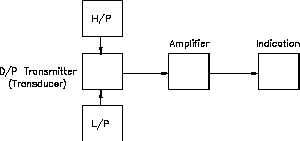Level Detectors
LEVEL DETECTION CIRCUITRY
LEVEL DETECTION CIRCUITRY
Remote indication provides vital level information to a central location.
EO 1.3
STATE the three reasons for using remote level
indicators.
EO 1.4
Given a basic block diagram of a differential pressure
detector-type level instrument, STATE the purpose of
the following blocks:
a.
Differential pressure (D/P) transmitter
b.
Amplifier
c.
Indication
EO 1.5
State the three environmental concerns which can affect
the accuracy and reliability of level detection
instrumentation.
Remote Indication
Remote indication is necessary to provide transmittal of vital level information to a central
location, such as the control room, where all level information can be coordinated and evaluated.
There are three major reasons for utilizing remote level indication:
Level measurements may be taken at locations far from the main facility
The level to be controlled may be a long distance from the point of control
The level being measured may be in an unsafe/radioactive area.
Figure 15 illustrates a block diagram of a
Figure 15 Block Diagram of a Differential
Pressure Level Detection Circuit
typical differential pressure detector.
It
consists of a differential pressure (D/P)
transmitter (transducer), an amplifier, and
level indication.
The D/P transmitter
consists of a diaphragm with the high
pressure (H/P) and low pressure (L/P) inputs
on opposite sides.
As the differential
pressure changes, the diaphragm will move.
The transducer changes this mechanical
motion into an electrical signal.
The
electrical signal generated by the transducer
is then amplified and passed on to the level
indicator for level indication at a remote
Rev. 0
Page 15
IC-03


